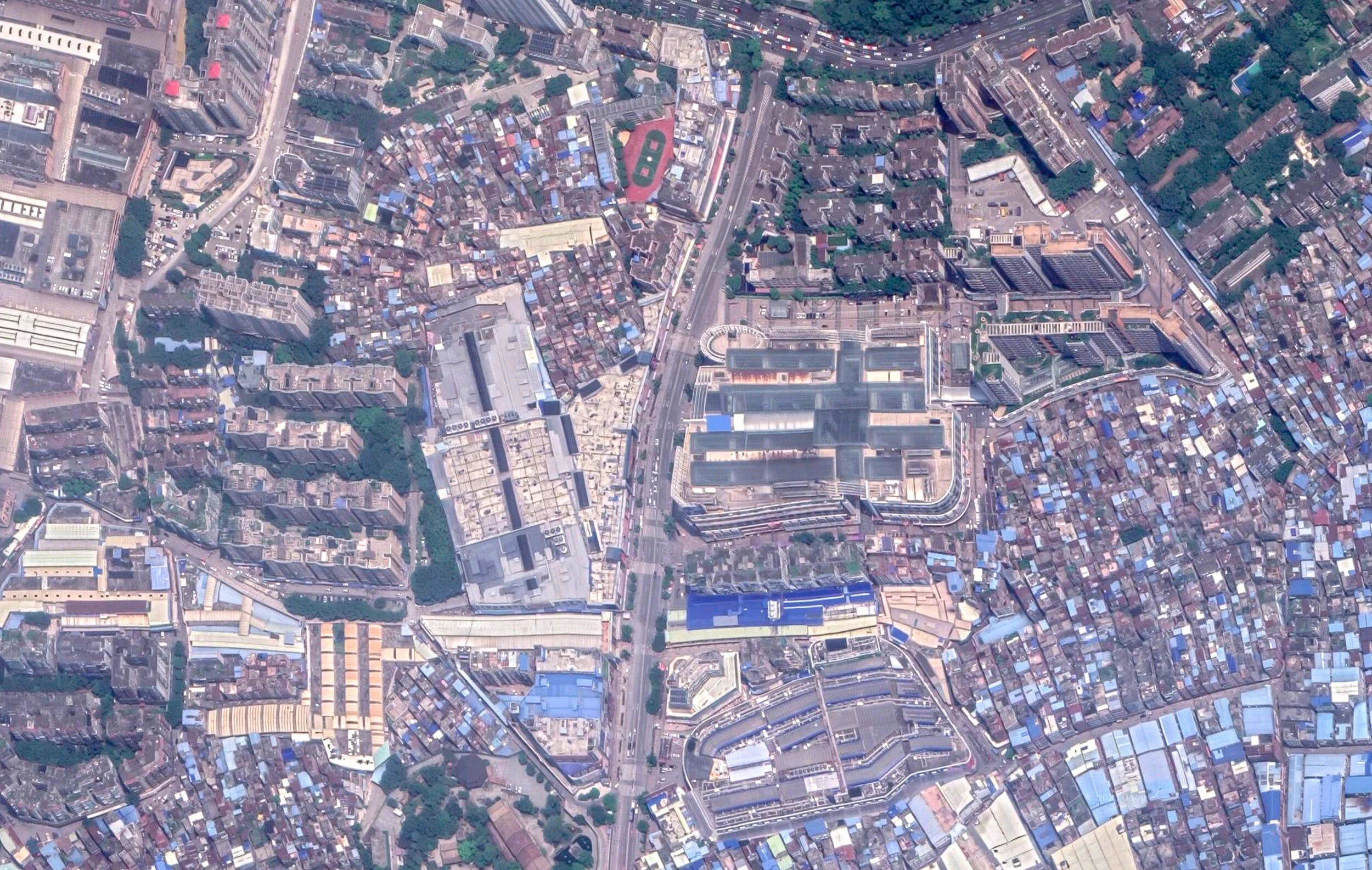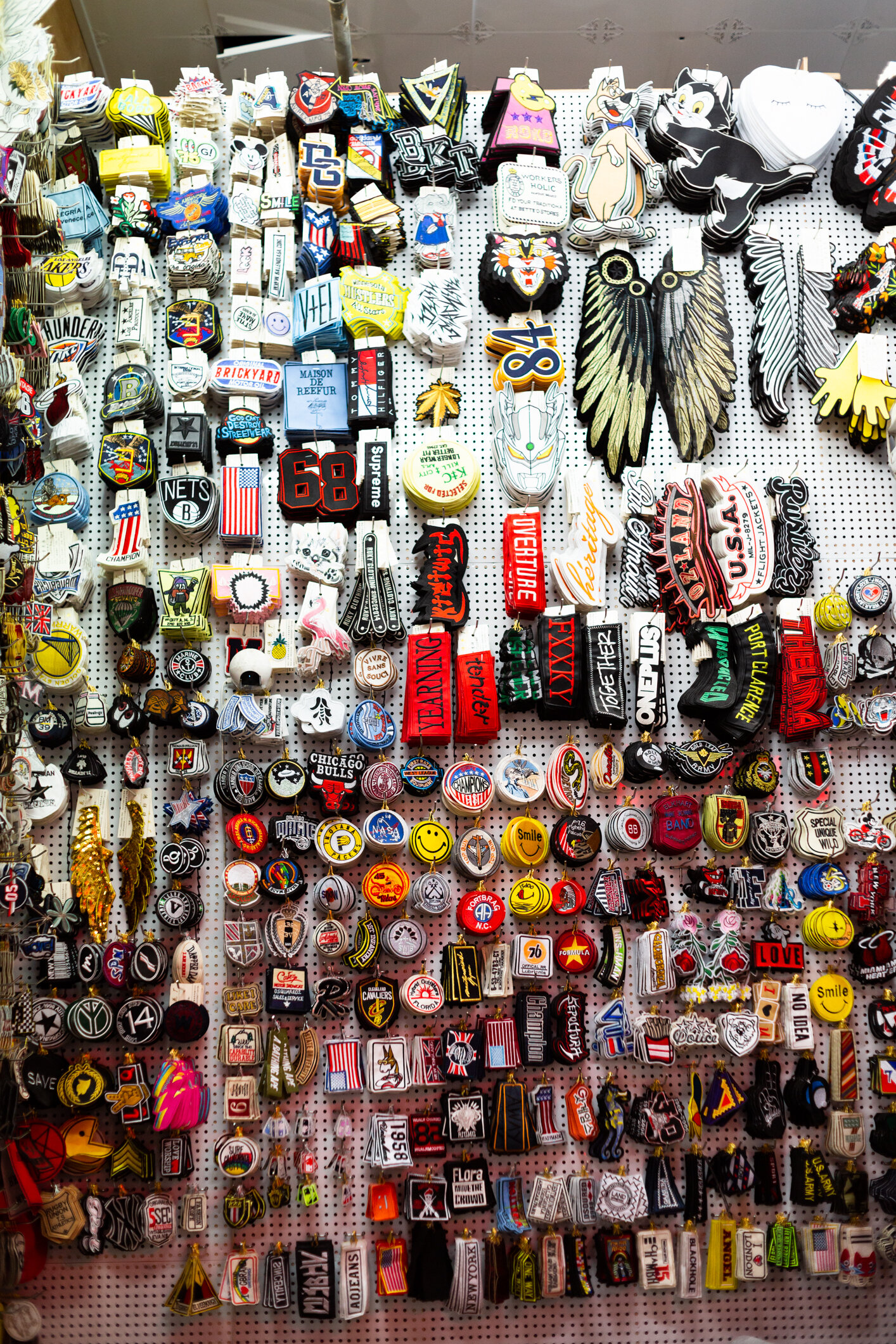Your Clothes Have Been Here: Visiting the Zhongda Fabric Markets, Guangzhou China
The busy morning rush along Ruikang Road
I love markets! They are the engine of the city, where commerce and culture clash together. From Chelsea Market and Wall Street in Manhattan, to Singapore’s Tekka Market, and even in Hoi An, the best of them are a magnetic force that come to define neighborhoods and cities. In my years of traveling, I have never experienced anything like the Zhongda Fabric Market. Located on the Haixinsha island in the global city of Guangzhou, its history sets it apart from anything else. In just over thirty short years it grew from four small villages into a major hub for the multi-billion dollar international garment industry.
Ruikang Road, the main thoroughfare cutting through the center of the Zhongda Market
At the heart of the Zhongda Market is the wide Ruikang Road. But you will begin to see fabric tradespeople blocks before you reach. It is teeming with pedestrians, mopeds, and occasional cars. The building facades loom tall on each side of the road, with numbers and names prominently displayed. Behind them, tens of thousands of textile businesses are buying fabrics sourced from across China, and selling to an international customer base, in what is the largest such hub for a national industry worth over USD$100 billion. China News describes the city as, “a transit point for China's clothing trade,” and goes on to describe the Zhongda Market, “as one of the most important fabric markets in Guangzhou, this business district mainly deals with domestic and overseas fabrics, yarns, and garment accessories,” (China News: March 2020, en).
Facades of the superstructure, with massive signage to aid way-finding
The area is dominated by some twenty superstructures, each containing a million or more square feet, and thousands of stalls for small and medium-sized businesses. In total, the modernized district holds over 100,000 stalls. Hidden behind these modern behemoths are the densely packed four to five story ad hoc urbanized factory and residential buildings from the 1990s. In sum, the area has cultivated an environment where even small businesses can engage with global trade. For this reason, the Zhongda Market is notable as a model for how to retain a garment industry in a city whose GDP rivals Singapore.
The narrow streets behind the modernized Zhongda market, which would have defined the markets’ built environment in the late 1990’s and early 2000’s
History
For a city as old as Guangzhou, it may be surprising to learn that the confluence of supply and demand that spawned the Zhongda Fabric market is a modern phenomenon. Guangzhou’s name was first recorded in 226 CE. The Zhongda market started in the late 1980s. Its young history ties together China’s unique experience with modern globalization set up by Deng Xiaopeng, the power of ad hoc urbanization in response to economic demand, and urban renewal strategies in the 21st century.
Zhongda Market viewed from above, image courtesy Google Satellite
The origins of the textile industry started before those first textile stalls congregated. Guangzhou had long been a regional capital in the prosperous Pearl River Delta. So in the 1970s, when Deng Xiaoping started the process of opening China to the global economy, Guangzhou quickly benefited from its proximity to Hong Kong. An informal economy of transient textile stands began to amass around the urban core up until they were displaced in 1988. They were pushed to what was then the urban periphery, near a wool plant, and south of the Sun Yat-sen University campus, (Altrock, Schoon: Rural Migrants in Urban China, 2013). The textile vendors set up shop in four sparsely populated villages and began to grow.
A residential building behind the main road’s superstructures
A fork in the road between two modern super structures leading from Ruikang road into a dense area
During the 1990s, the market’s activity steadily grew as fast as they could build. New garment and processing factories and the increasing population would help to attract a larger customer base within China, which would, in turn, attract even more factories, and appeal to customers abroad. However, the large influx of migrant workers spawned a period of unregulated construction and an unusually dense built environment. Clustering helped to support its productivity in the short term, but created an enormous challenge for its future ability to grow.
Two stalls side by side, with one just opening up
It may be hard to imagine an entire neighborhood growing in less than a decade right under the nose of those in charge, but the local authorities, the Haizhu District Government, lacked the resources to control the rapid urbanization. As a consequence, “serious urban problems resulted due to the inability to prevent pollution and fight fires effectively. Also, the area suffered from increasing security problems as theft and other crimes became rampant,” (Pacific News: Jan-Feb 2010, 6). Four to five-story structures were so closely built, residents could shake the hands of their neighbors through their windows.
The Haizhu District Government would begin to introduce changes by 1996. Corrugated iron sheds were replaced with brick and mortar. While this was significant in establishing the professional stature of the markets, it would not fix the crowded streets, pollution, and lack of safety.
Inside one of the active boulevards cutting through one of the textile centers
Modernization and upgrades came when the Guangzhou Municipal government got involved, leading to mass demolition, new projects, and regulations stabilizing the market. In the early 2000s, the Management Committee of Zhongda Textile formed, uniting industry and commerce representatives with the police, taxation authorities, and communications tech operators to build a regulatory plan that could facilitate the area’s growth. The understanding of local stability in market prices helped encourage greater investment like the super-structures which define the streetscape today.
Inside the Guangzhou Changjiang International Textile Center
The first major structure was the Guangzhou International Textile and Accessories center, with over 300,000 square meters and 4,000 shops. Concerns about fire-fighting and security got addressed on a district-wide scale. By the time I got there, shiny fire extinguishers were in abundance. Recent technology has also made phone-payment incredibly easy. Every transaction can occur through QR-code phone payments, even for just a few yuan. Paired with many security cameras, this is an easy way to let shoppers know their identity is difficult to hide.
International Reach
Compilation from the comment section of a CNDC.co article offering advice on how to navigate the Zhongda Market
An entire economy has grown around the textile industry, including hotels, catering, banking, and information-based industries. The Zhongda Market’s international reach is reflected in places like this 2018 article’s comment section. In it, there are many people clearly interested in doing business with the market. They comment that they are from countries across the world, like Sri Lanka, America, Nepal, Burma, Senegal, Ghana, South Africa, and Nigeria. It was interesting to see so many people writing in from Africa. It reminds me how much China’s Belt and Road Initiative is hoping to create the infrastructure for Africa to engage in its economy.
Visiting the market, it is hard to not feel in awe of the sheer scale. There will be stalls and stalls selling objects as benign as shoe laces, specific types of fabrics. There are entire buildings you can visit if you want a decorative patch. The possibilities of what you can purchase look genuinely endless, and the odds of finding something for your business is more a question of if you can find it. While myself as a simple consumer of fabrics, these business are not geared towards me, rather they are geared for fashion designers and other companies that need cheap or fashionable fabrics in their own.
A wall of various patches at one of the hundreds of stalls for patches
Post-Cold War globalization is responsible for a lot of misery, and has entrenched existing economic models set up during centuries of colonization, but it has also been a part of incredible good by lifting hundreds of millions of people around the world, and especially in China, out of rural poverty. Seeing so many small business run by people who are clearly far from rural poverty is uplifting, and seeing a model of globalization where the industry is not dominated by an oligopoly is inspiring.
Adult and child walking through the market
Conclusion
It is incredible to walk through the endless rows of stalls, both narrow and wide, and to appreciate how this market started when an informal industry of textile stands in Guangzhou was brought together by external forces. The dramatic consequences of that one decision by the city is a testament to the benefits of a neighborhood with urbanized space for the working class.
Hopefully, this history convinced you of one thing, that there is so much to learn from the Zhongda market. What makes the Zhongda market exciting for myself is how the average pedestrian can walk through and appreciate the scale of globalization without massive imposing International-style towers. While the rest of the global economy is shifting towards anti-competitive corporations who buy out competition, and our vision of available products shrinks, the Zhongda markets is bucking that trend, by showing diversity in market is a viable model in the 21st century, even without corporate juggernauts.
This article owes a lot of credit to “Global Change and China's Clusters” published by three German academics, Friederike Schröder, Michael Waibel, and Uwe Altrock, published in Pacific news in 2010. Without it, I would not have been able to tell the district's history in full. Missing from this story is the perspective of any factory worker, merchant, or stall-hands. While I have done my research, this is something I regret not finding.
Thank you so much for reading my post. Check me out on social media with the links below, and please press the like button and comment
Article was self-edited




















